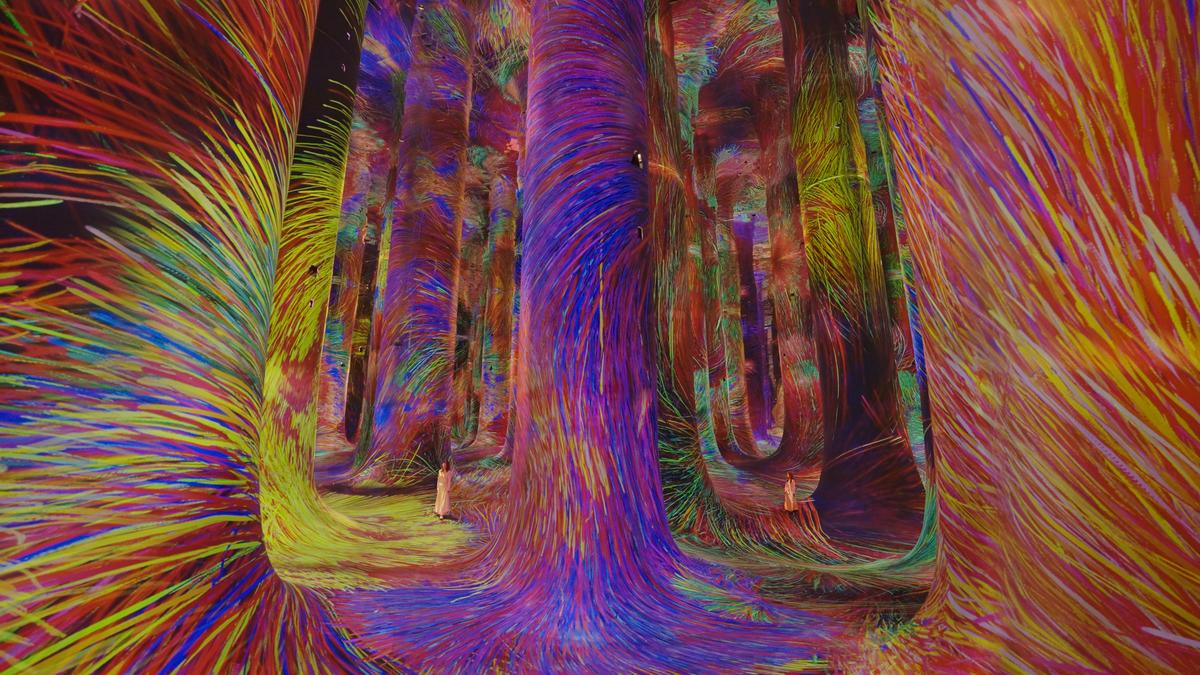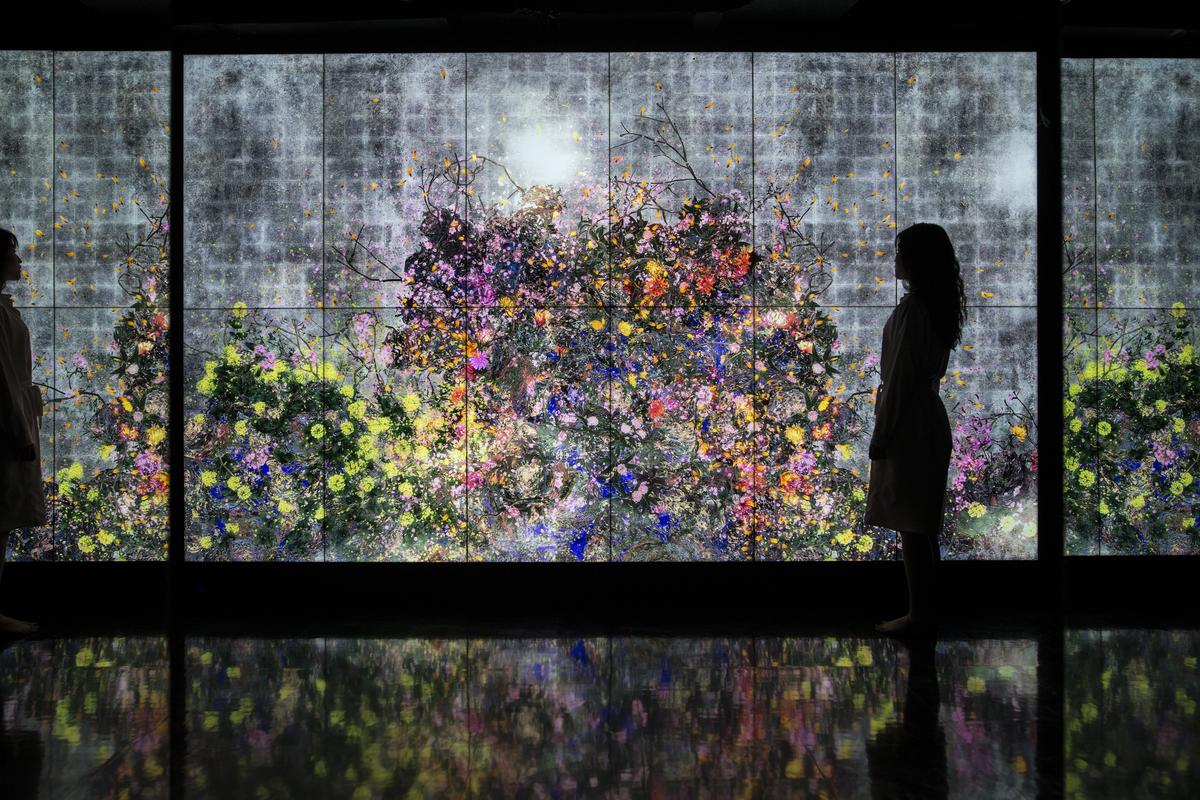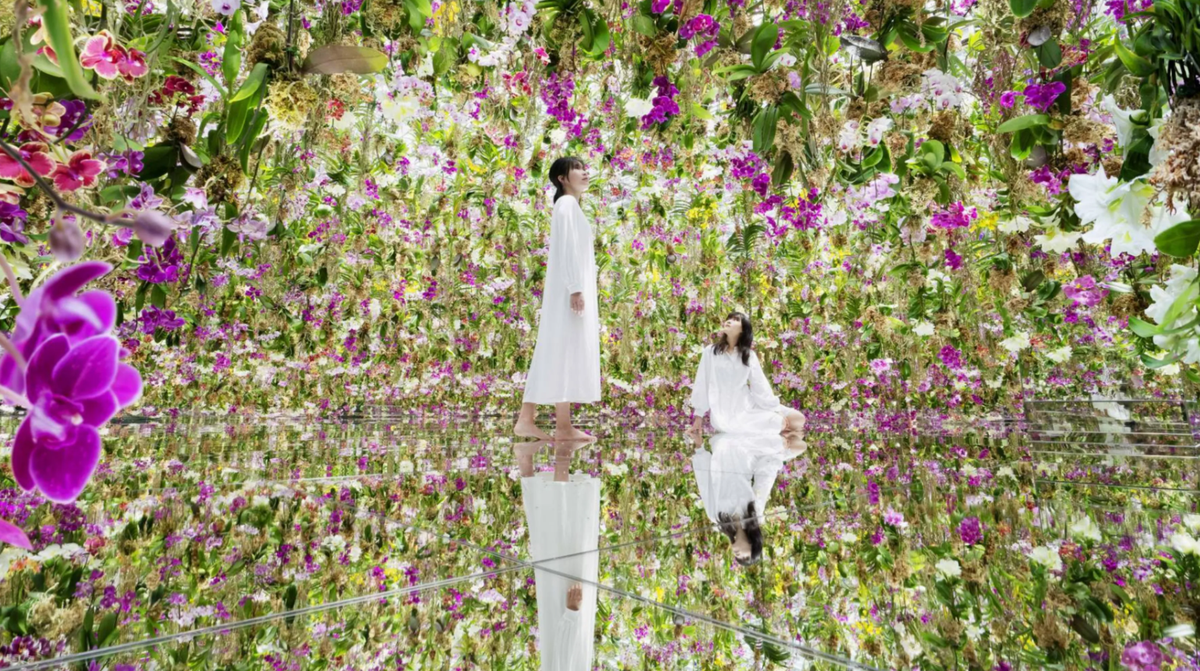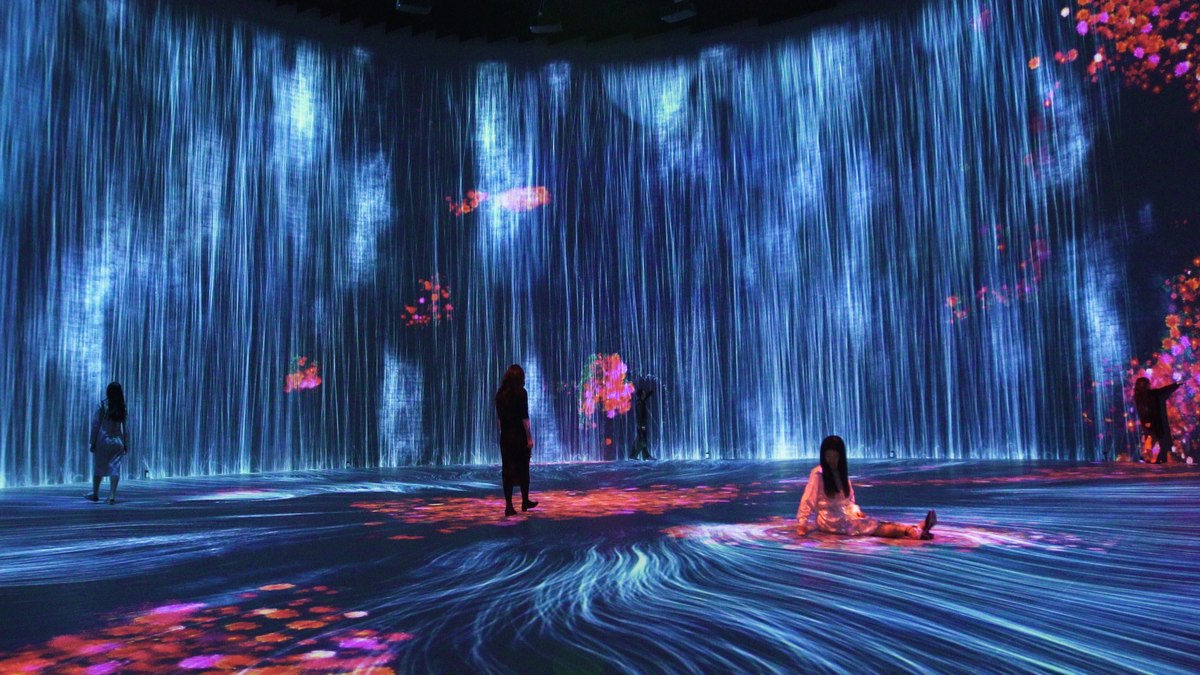Since its founding in 2001 in Tokyo by engineer and technologist Toshiyuki Inoko, teamLab has grown from a small group of friends experimenting with code and light into one of the most renowned collectives of artists working with technology today. Best known for creating large-scale immersive environments — waterfalls that respond to touch, forests that shimmer and fade, fields of light that seem to breathe, and gardens that bloom and dissolve — teamLab’s work evokes the joy of being briefly, blissfully, one with the world.
For years, the art world didn’t quite know what to make of them. Takashi Kudo, teamLab’s Communications Director, recalled the early days in an interview with Asia Society, stating: “As time went on, while we gained a passionate following among young people, we were still ignored by the Japanese art world. Our debut finally came in 2011 at the Kaikai Kiki Gallery in Taipei, thanks to artist Takashi Murakami.”
Takashi Kudo, teamLab’s Communications Director
| Photo Credit:
Courtesy teamLab
Since then, teamLab has developed a language entirely its own, creating museums and installations that draw millions worldwide. Among them are teamLab Planets In Tokyo, where visitors walk through water and mirrored gardens, and teamLab Borderless, a “museum without a map” where artworks flow seamlessly across rooms. In San Francisco, teamLab: Continuity extends the Asian Art Museum into a living world of flowers and fish. And in Abu Dhabi, teamLab Phenomena — the collective’s most ambitious project yet — merges architecture, art, and nature into one evolving experience, bringing their vision closer than ever to India.

Forest and Spiral of Resonating Lamps
| Photo Credit:
Courtesy teamLab
Kudo will be in Mumbai this month — a few years after the collective won the Asia Society Asia Arts Award in 2017 — for a conversation with the Asia Society India Centre ahead of Art Mumbai. Edited excerpts.
I know when I speak to you, I’m not speaking to one person but to an entire collective. So, who is teamLab?
teamLab is an art collective. The word ‘team’ is important: everything we do is a collaborative process. At our very core, we are always researching, not in an academic sense, but to understand how humans recognise and relate to the world, how people understand their very ‘being’.
Who is part of the collective?
To put it differently, we are like a flock of birds or a school of fish, each member moves independently, but together we create one collective motion. There’s no leader, it’s all organic. Each project attracts the people it needs: software engineers, architects, mathematicians, animators, graphic artists, musicians, writers, coders, and so on. Some people join for fun, some for growth, some for money. Everyone has their reason. At any given time, there are around 200-300 people involved, depending on the project. The collective keeps expanding and evolving.

Order in Chaos
| Photo Credit:
Courtesy teamLab

Megaliths in the Bath House Ruins
| Photo Credit:
Courtesy teamLab
Given how much of your work uses technology, is there still an analogue, non-digital side to your process?
Absolutely. The creative process always involves trial and error, prototypes, failures, arguments. Each member approaches the problem from their own expertise. And yes, we argue — in the most human, analogue way. Those arguments are part of our creative process. They make the work stronger.

Your work is often described as “immersive.” Why do you think people today need to step inside something to feel it?
Nature itself is immersive. When you climb a mountain, walk for hours, and finally see the sunrise — that moment of exhaustion and awe — you feel you’re part of the world. Through our installations, we want people to physically feel connected, not just to observe art but to become part of it. Today, most people consume the world through screens. But true understanding is physical, like learning to swim. You can read about it or watch videos, but until you jump into the water, you’ll never know what it means. Art, too, must be entered with the body.
In our installations, people become part of the artwork, like entering a digital garden or forest. The work is alive and changing. That’s not new, it’s a continuation of something ancient. People call it immersive, but to us, that’s just how the world has always been.
Where does technology fit into that relationship between body and world?
Technology is simply a material, like paint or clay once was. For centuries, artists used [all] available tools to express their imagination. Today, our tools are projectors, sensors, and software but technology is not the goal. It’s a medium through which we build experiences that expand our perception of the world.

Continuous Life and Death at the Now of Eternity II
| Photo Credit:
Courtesy teamLab
And yet your work moves between galleries, museums, public spaces, including parks. How has your relationship with “the art world” evolved through all this?
When we started, the art world didn’t take us seriously. Over time, that changed. But our belief remains: only art can change how people think and live. Design, law, politics, they provide answers. Art, on the other hand, asks new questions. And when society changes, the old answers stop working. The industrial revolution gave us one set of ‘right answers’. The digital revolution requires new ones. Art helps us find those questions.
And ultimately, while we have to do what we must, to make ends meet and survive, for us, art is not about ownership or names. If our work changes how people think, or how they relate to the world, that’s enough.

Universe of Water Particles in the Tank, Transcending Boundaries
| Photo Credit:
Courtesy teamLab

Universe of Water Particles in the Tank, Transcending Boundaries
| Photo Credit:
Courtesy teamLab
You often speak of continuity between humans, nature, and technology. I sense something spiritual in that. How does Buddhism or Japanese philosophy shape this worldview?
We were born in Japan, so those influences are natural. Buddhism, Shintoism, the sense of continuity between things, it’s in our culture. We’re interested in reconstructing what our ancestors expressed, using today’s technologies. Japanese art has always been spatial: think of sliding doors, gardens, the way light moves through space. These forms were influenced by cultures along the Silk Road from India to Persia to Japan. In the 19th and 20th centuries, that kind of art faded because it didn’t fit industrial modernity. But with digital technology, we can bring that sensibility back.
In our installations, people become part of the artwork, like entering a digital garden or forest. The work is alive and changing. That’s not new, it’s a continuation of something ancient. People call it immersive, but to us, that’s just how the world has always been.

Floating Flower Garden Flowers and I are of the Same Root, the Garden and I are One
| Photo Credit:
Courtesy teamLab
The cyclical idea that technology can return us to something ancient feels particularly resonant in India. Before we close, what would you like to say to audiences here?
I’ll tell you one small story. In 1996 or 1997, I was travelling in India, as a university student, living like a backpacker. Every morning, I’d drink juice from a fruit-seller in the market. One morning, I asked for apple juice. He smiled and gave me mango juice instead. I told him again, “No, I want apple juice.” He nodded, said he understood and handed me another mango juice. I was confused but drank it anyway. It was sweet, fresh, and perfect. Later I realised, he wasn’t ignoring me. He understood that the best fruit that morning was mango. He wanted to give me the best thing he could. That moment changed how I think about care, misunderstandings, friendship, and maybe even how I make art.
Takashi Kudo will be in conversation with Prateek Raja, director of Experimenter, as part of the third edition of Asia Society India Centre’s Trailblazers series on November 9, at IF.BE, Mumbai.
The culture writer and editor specialises in reporting on art, design and architecture.

